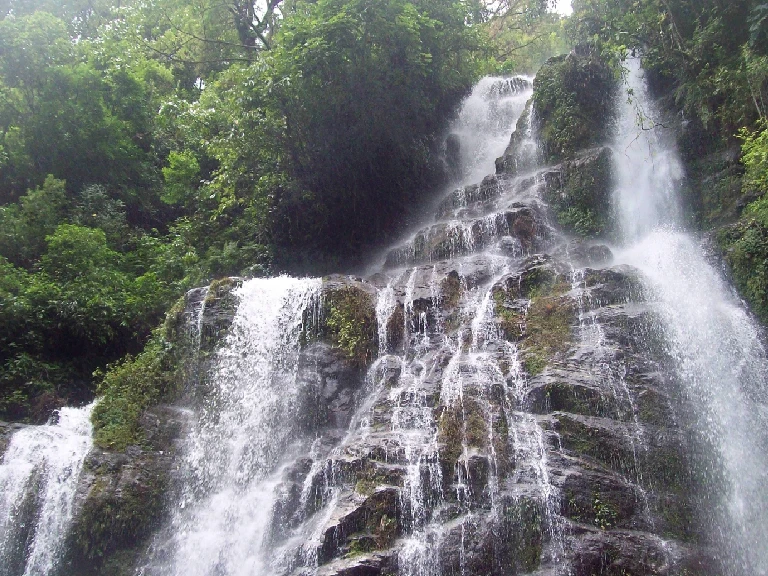Steam in the Valley
‘Choo, choo’ the engine sounds
Here
starts the wizened train,
‘Choo.
Choo’ again it hums
And
we’re lost in time again
A
cloud of steam engulfs us all,
As
if a tunnel unto time,
Can
you smell the burning coal and smoke?
Can
you feel the sooty grime?
For
a hundred years, these engines rolled
And
hurtled on these hills,
Their
echoes sound even today
Their
roar, the valley fills
As
Whitton’s dream conquered the Blues,
The
little colony grew,
Engines
of steam traversed the land –
Earthy,
red and new
And
tracks of iron forged these hills
In
these ancient lands, a scar
As
locomotives sped past zig-zag hills
To
Katoomba and afar
For
new roads and rails to grow
Though
plenty clues are to be found
If
you run a little slow
Of
the older times, the Age of Steam
When
the hills were conquered all,
A
mural here, a memoir there –
Or
rolling stock upon a knoll
At
Valley Heights, such shards abound
To
remember bygone days
Roundhouse
bays, a turntable too
Those
bank engine railways
Memories stashed in engines few
Memories now so rare,
Of timeless tales from a glorious past,
At Eagar's Platform here
Even
today, the hill-folks say
You
can hear on a quiet dawn,
The
chug-chug-chug of a choo-choo train
Of
days that were never gone
And
if lucky be, you still can see
Those
visions from the past,
Up
Lapstone vale, a carriage chugs
Trapped
in a steamy blast…
It was a warm Sunday morning at the quaint little village of Valley Heights in the Blue Mountains, the peacefulness perturbed only by the noisy whistle from an old steam engine, meticulously maintained from the past. It was a glowing memoir, a flowing tribute to the engineering skills of a young colony that needed steam trains to grow, develop and nourish itself. This need was nurtured by a John Whitton, father of the Blue Mountain railways (And in a way father of Australian railways) who in the 1850s devised zig-zags to scale the steep Blue Mountains ridge from the plains of Greater Sydney. (In a railway zig zag – designed to climb steep gradients with minimal need for tunnels and heavy earthworks - a train is required to switch its direction of travel in order to continue its journey. For a short distance corresponding to the middle leg of the letter "Z", the direction of travel is reversed, before the original direction is resumed, allowing the train to ascend in steps until it reaches the top of the ridge).
Whitton
created two zig-zags, one in Lapstone for trains to ascend from Emu Plains, and
a grander one in Lithgow for the trains to descend. The railway track comprised
a single line operation catering for both “Up” (east bound) and “Down” (west
bound) trains crossing the Blue Mountains. On arrival at Penrith, down trains
required the assistance of a second locomotive (Pilot) for the subsequent climb.
After Lapstone, near today’s Valley Heights, a depot was established to house
these bank engines that would be used to provide additional horsepower to push the
trains over the steep ascent to Katoomba. The line included many small
stations, some with passing loops or sidings to allow for the safe passing of
trains traveling in the opposite direction (you will find a Wascoe’s siding
even today after Glenbrook).
In
1875 a platform was opened at today’s Valley Heights to service the private
residence of the Colonial Treasurer, Geoffrey Eager. The platform was
originally called Eagar's Platform but was renamed The Valley and
in 1890 it was renamed to its present name, Valley Heights.
Over time, as more powerful engines were developed the need for bank engines declined and the depot at Valley Heights was shut down in the late 1980s. The rolling stock and infrastructure has still been thankfully preserved as the Valley Heights Rail Museum – rated as one of 49 modern wonders of the world by the Sydney Morning Herald.
A
few of the steam trains are run on special days at the Museum so that train
enthusiasts - children and grown up alike – can relive the memories of that bygone
era when man conquered the mountains, and a young colony realised it could wrap
its arms around a continent.
1st December’2023



Comments
Post a Comment